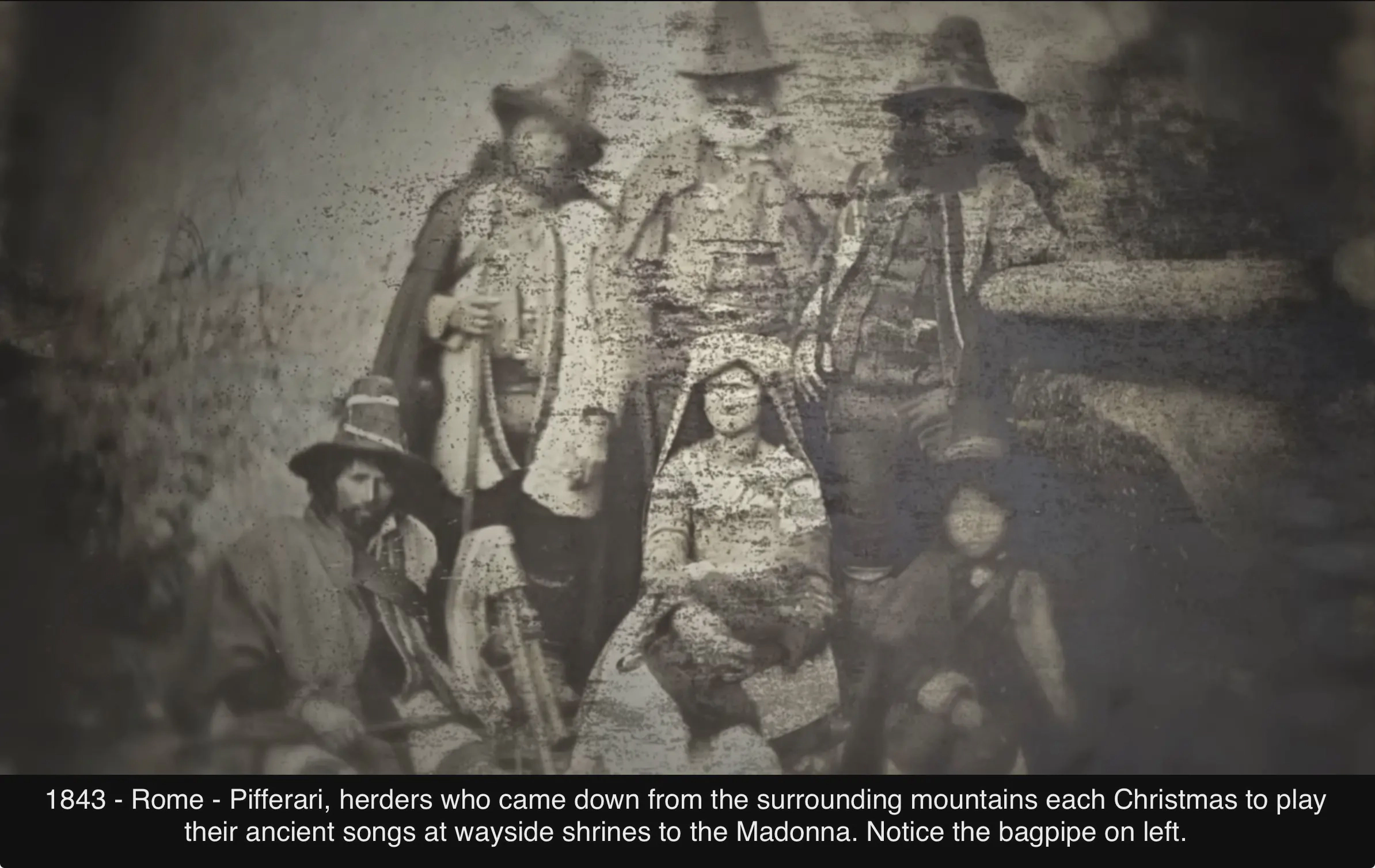- Home /
- bagpipe articles /
- italian zampogna
italian zampogna
Italian Bagpipes

The zampogna is a traditional Italian bagpipe, which has been a significant part of Italy’s folk music tradition, especially in the southern regions such as Abruzzo, Calabria, Campania, and Sicily, as well as in central areas like Lazio.
Characterized by its distinctive sound and complex construction, the zampogna is closely associated with pastoral culture and is traditionally played during Christmas and other religious festivals.
Italian Zampogna Performers
The Zampogna typically consists of two chanters (melody pipes) and two or more drones (pipes that produce a continuous harmonizing note). The chanters often have a double reed, similar to an oboe, while the drones usually have a single reed.
The instrument consists of several pipes of varying lengths that produce different pitches. Typically, it includes two chanters (melody pipes) and two or more drones (which produce a continuous harmonic background note). The chanters often are played with both hands and can produce a harmonious sound that is richer and more varied than many other types of bagpipes. The zampogna is made from various materials, including wood for the pipes and leather or synthetic materials for the bag, which is inflated either by mouth or through a bellows operated by the elbow.
The playing of the zampogna is closely linked to pastoral life and seasonal agricultural cycles, reflecting themes of birth, death, and renewal that are central to rural and agricultural communities.

It is particularly associated with the Christmas season, where zampogna players, often accompanied by a piffero (a type of double-reed oboe), would perform traditional Christmas music and carols in towns and villages, a practice reminiscent of the shepherds celebrating the birth of Christ.
Despite its strong association with traditional and rural contexts, the zampogna has experienced a revival in recent years, with increased interest in folk music traditions and cultural heritage. This has led to a renewed appreciation for the instrument, its music, and its role in Italian cultural history, with contemporary musicians exploring both traditional repertoire and new compositions for the zampogna.
Other Related Content
city of rome pipe band
Our objectives are the study and dissemination of the culture and music of the traditional Scottish Pipe Band. Browse through our site, where you’ll find…
Alberto MacDonald
I am champion the World of SMART of DRUM MAJOR 1990 in Glasgow Scotland. I play the bagpipe to a good level. Bagpiper in Rome Italy
“the first photo of a bagpipe?”
In Spring 1842, a Wealthy Scholar and Artist, named Joseph Girault De Prangey, left his native France to embark on a grand tour of the Orient.